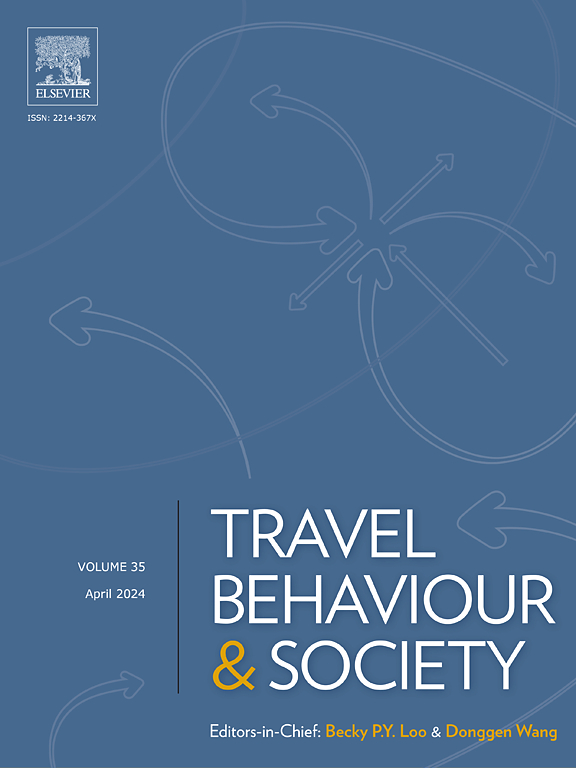Reducing urban speed limits decreases work-related traffic injury severity: Evidence from Santiago, Chile
IF 5.1
2区 工程技术
Q1 TRANSPORTATION
引用次数: 0
Abstract
Work-related transportation incidents significantly impact urban mobility and productivity. These incidents include traffic crashes, collisions between vehicles, and falls that occurred during commuting or work-related transportation (e.g., falling while getting off a bus during the morning commute or while riding a bicycle for work). This study analyzes a decade of work-related transportation incident data (2012–2021) in Santiago, Chile, using records from a major worker’s insurance company. Using negative binomial regression, we assess the impact of a 2018 urban speed limit reduction law on incident injury severity. We also explore broader temporal, spatial, and demographic patterns in these incidents in urban and rural areas.
The urban speed limit reduction is associated with a decrease of 4.26 days in prescribed medical leave for incidents in urban areas, suggesting that lower speed limits contribute to reduced injury severity. Our broader analysis reveals distinct incident patterns across different groups. Workers traveling by motorcycle and bicycle experience more severe injuries when involved in traffic incidents, with marginal effects of 26.94 and 13.06 additional days of medical leave, respectively, compared to motorized vehicles. Female workers tend to have less severe injuries, with an average of 7.57 fewer days of medical leave. Age is also a significant factor, with older workers experiencing more severe injuries — each additional year of age is associated with 0.57 more days of medical leave. Our results provide insights for urban planning, transportation policy, and workplace safety initiatives.
降低城市限速可降低工伤事故的严重程度:来自智利圣地亚哥的证据
与工作有关的交通事故严重影响城市交通和生产力。这些事故包括交通事故、车辆之间的碰撞以及在通勤或与工作有关的交通工具中发生的摔倒(例如,在早上通勤期间下车或骑自行车上班时摔倒)。本研究使用一家大型工人保险公司的记录,分析了智利圣地亚哥10年来与工作相关的交通事故数据(2012-2021)。采用负二项回归方法,评估了2018年城市限速降低法对事故伤害严重程度的影响。我们还探讨了城市和农村地区这些事件的更广泛的时间、空间和人口模式。降低城市限速与城市地区事故规定病假减少4.26天有关,这表明降低限速有助于降低受伤严重程度。我们更广泛的分析揭示了不同群体的不同事件模式。与机动车辆相比,骑摩托车和骑自行车的工人在发生交通事故时受到的伤害更严重,其边际效应分别是多休26.94天和13.06天的病假。女工往往受伤不那么严重,她们的病假平均少7.57天。年龄也是一个重要因素,年龄越大的工人受到的伤害越严重——年龄每增加一岁,病假就会增加0.57天。我们的研究结果为城市规划、交通政策和工作场所安全举措提供了见解。
本文章由计算机程序翻译,如有差异,请以英文原文为准。
求助全文
约1分钟内获得全文
求助全文
来源期刊

Travel Behaviour and Society
TRANSPORTATION-
CiteScore
9.80
自引率
7.70%
发文量
109
期刊介绍:
Travel Behaviour and Society is an interdisciplinary journal publishing high-quality original papers which report leading edge research in theories, methodologies and applications concerning transportation issues and challenges which involve the social and spatial dimensions. In particular, it provides a discussion forum for major research in travel behaviour, transportation infrastructure, transportation and environmental issues, mobility and social sustainability, transportation geographic information systems (TGIS), transportation and quality of life, transportation data collection and analysis, etc.
 求助内容:
求助内容: 应助结果提醒方式:
应助结果提醒方式:


